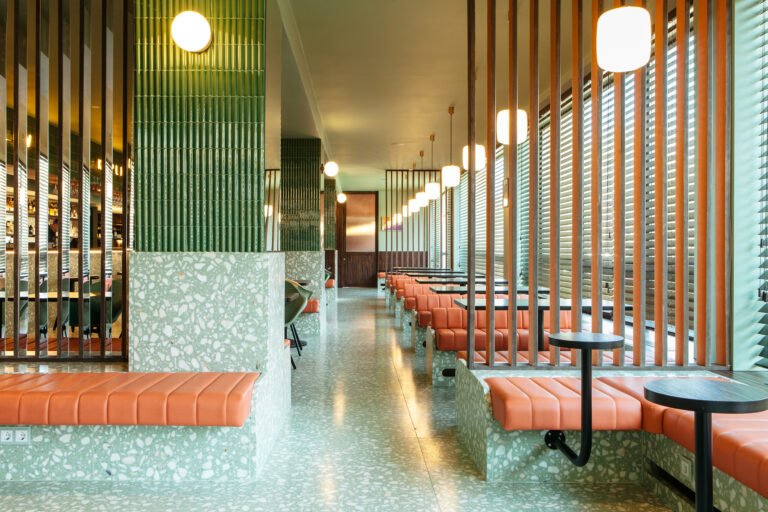el fil verd completes bioclimatic restoration of Nineteen Forties brick home in barcelona
el fil verd completes restoration of barcelona house from 1942
spanish architecture firm el fil verd has completed the renovation of a single-family house with a private courtyard in barcelona, spain. the refurbishment sets its focus on respecting the existing architecture and preserving the original character of the residence which was built in 1942 and settles amid both typologies from the early 1900s, as well as modern buildings. the intervention keeps the brick structure intact while re-distributing the spaces in accordance with the clients’ needs, and bioclimatic principles.

from the pavilion, one can observe the building facade, the walking paths, and the fountain
all images by milena villalba
multiple, bioclimatic solutions
the main building is made up of baked clay brick load-bearing walls and baked clay brick vaults. before proceeding to the new distribution, el fil verd decided to reinforce the floors as well as part of the foundations. the wooden beams had been badly affected by wood borer and were therefore replaced. another critical point to solve was the presence of capillarity humidity that affected all the ground floor walls and the foundations.
the solutions adopted by the architects were multiple: a physical cut at the base of the walls, waterproofing and drainage of the foundation, and a ventilated chamber in the party walls. a ventilated slab has also been executed to provide good insulation and ventilation at ground level. in the house, the main rooms were arranged towards the southern façade to maintain a visual connection with the garden and the water source. the roof was landscaped and transformed into a solarium. the pavilion became a library and study thanks to its north orientation and a pre-existing overhead skylight. the existing courtyard was converted into an ‘urban forest’ interacting bioclimatically with the buildings, which are constructively adapted to achieve maximum energy efficiency. the envelope of the two volumes is completely insulated to maintain a constantly comfortable temperature throughout the year.
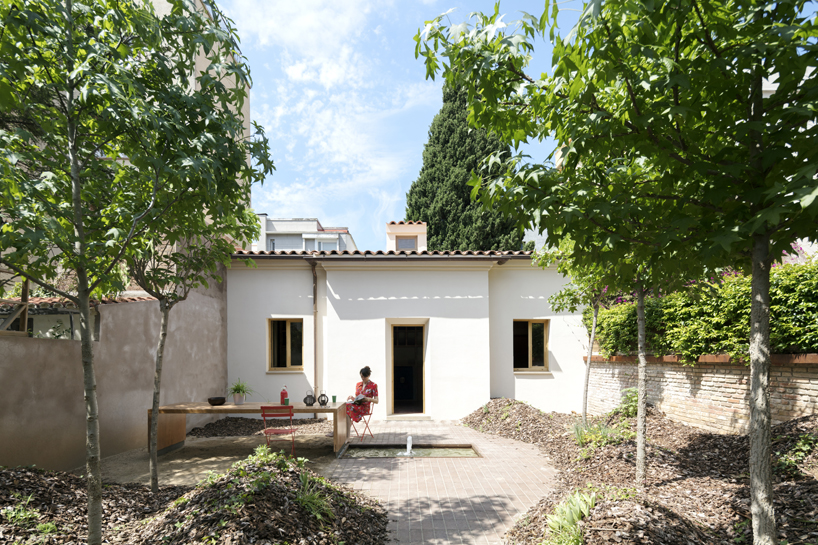
to reach the pavilion at the end of the garden one has to walk through the natural organic paths that are drawn between the dunes
natural, high-quality, breathable materials
the materials used are natural, of high quality, breathable, and without added toxic substances. this choice responds to aesthetic and health criteria of the project. from an aesthetic point of view, warm tones are favored because they recall the nature of a forest: exposed cork, terracotta, natural wood, corten steel. meanwhile, thanks to the materiality palette, the house and the garden work as a symbiotic unit. when it rains the skin of the house gets wet and darkens just like the bark of the trees in the garden.
the custom-made furniture with woods such as oak, linden, and walnut is superficially treated with natural oils and waxes. the interior modules of the cabinets are made of pine plywood to avoid the use of melanins. the main staircase of the house is restored and partly rebuilt, re-adapting the original railing. during the site works the environmental impact of waste was minimized, separating it by material and recycling them when possible. the cork remains were cut up and reduced into granules to be reused again as insulating fillers.
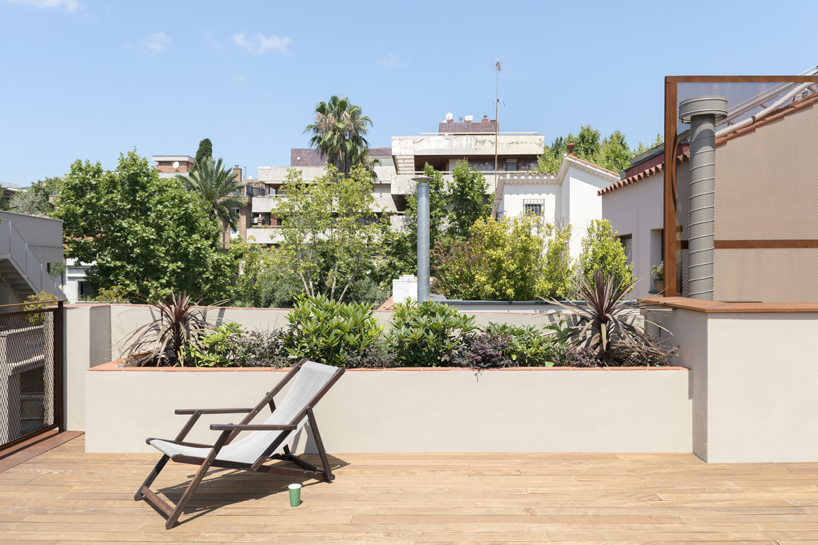
the upper terrace, south oriented, is a perfect outdoor space to enjoy during all the seasons
technical explanations and passive strategies
the objective of this project was to form a highly efficient building with precise control of the internal comfort conditions. to achieve this, passive and active strategies have been applied in equal measure. the entire enclosure is insulated with thermo-treated cork panels. responding to the heritage protection principles, the insulation is placed as an interior cladding, later plastered and finished with silicate-based paints to preserve breathability. on the ground floor below the slab, a chamber with igloos ventilates thanks to the temperature differential between the facades and prevents possible humidity problems. above the igloos, a vapor barrier and 20 cm of thermal insulation cut off any possible transmission of thermal flux between the ground and the house.
to take full advantage of solar radiation, the glazing is modulated by placing the low-emission layer according to the orientation of each façade. in addition, within the ‘urban forest’, deciduous trees allow solar radiation to enter inside in winter, and in summer they act as a solar filter, shading and protecting the façade and openings. the fountain in front of the pavilion works together with the garden: here rainwater is collected and oxygenated in a large underground tank and then reused for irrigation. in summer the presence of water reduces the temperature and favors natural ventilation throughout the ground floor.
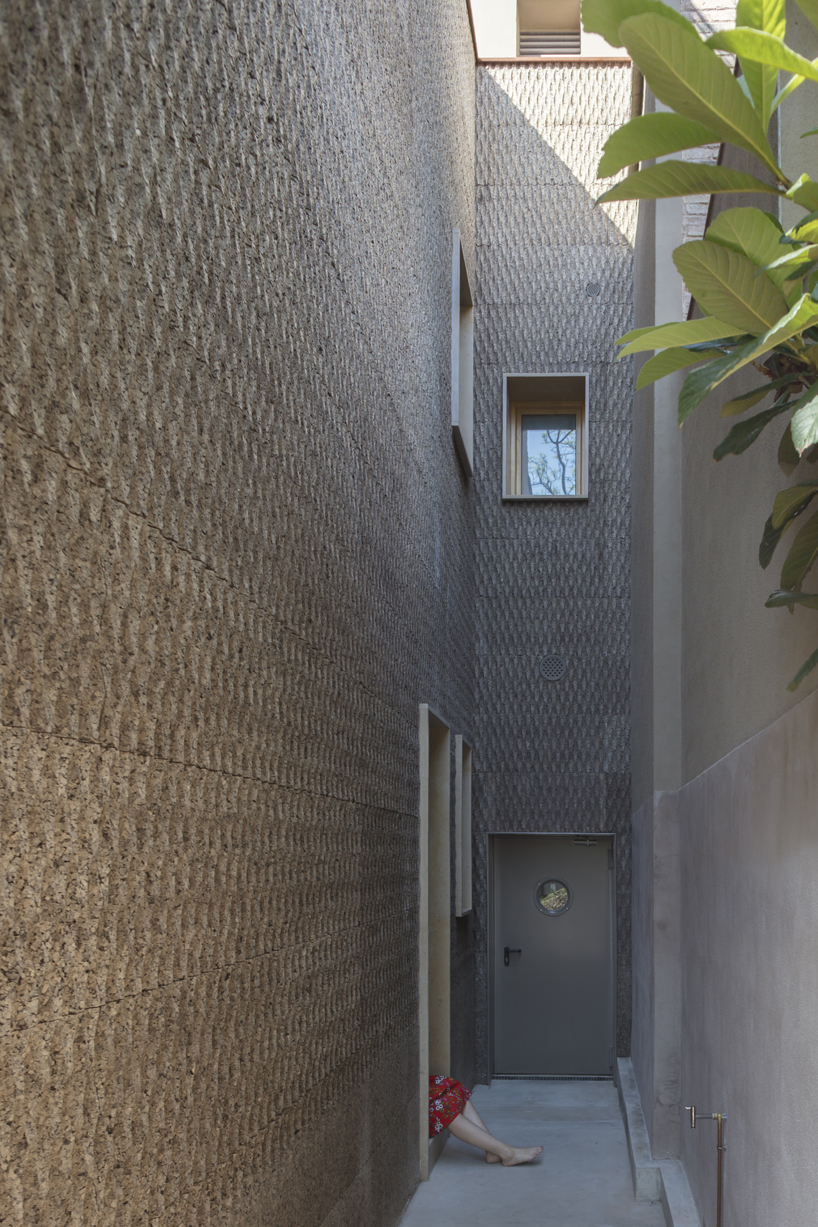
view of the passage and of the cork cladding on the side façade of the main building. the cork texture provides a warm and acoustic softened feeling
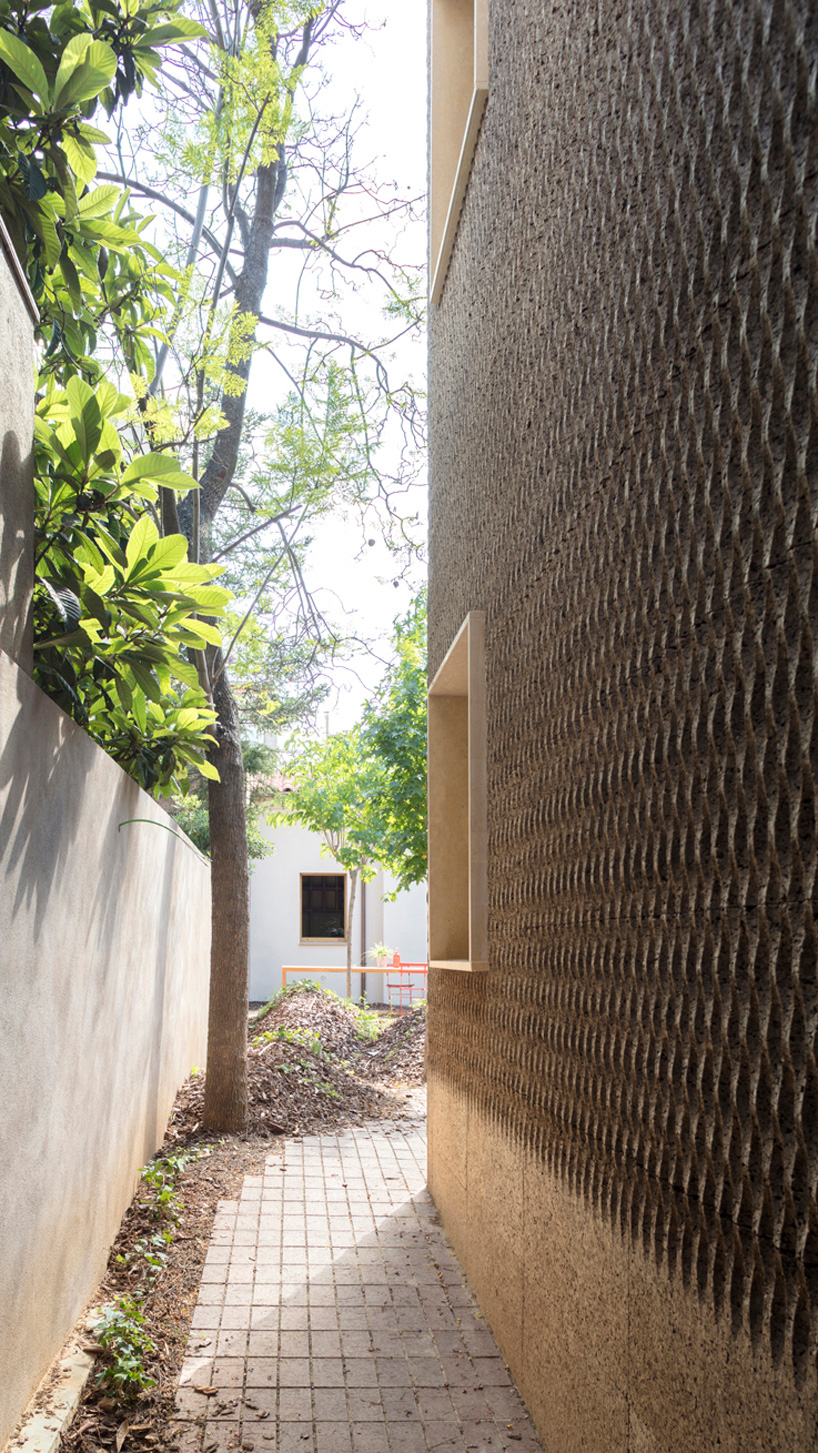
the entrance presents itself as a narrow passage that introduces the visitor to the garden and the natural materials used in the project
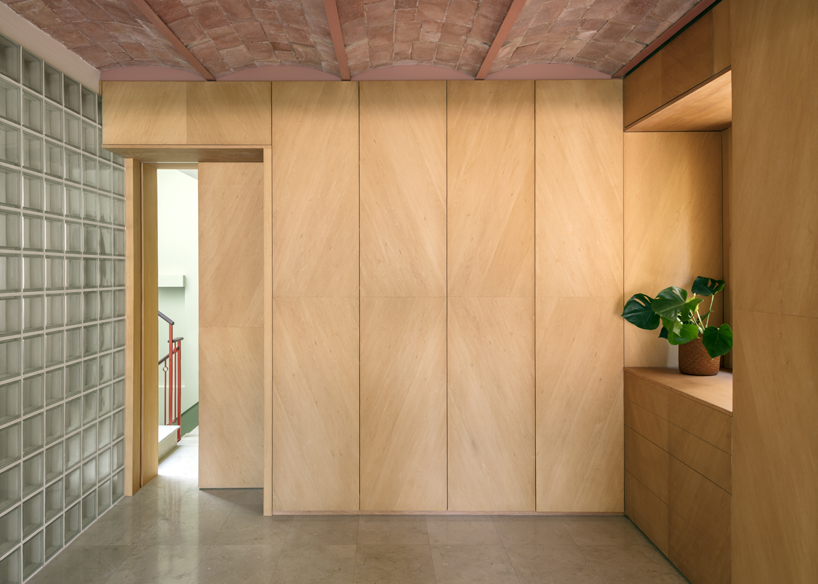
the cabinets in the main bedroom are part of the architectural frames that modulates the interior; the modules integrate doors, windows, and storage spaces using natural materials such as chestnut wood


